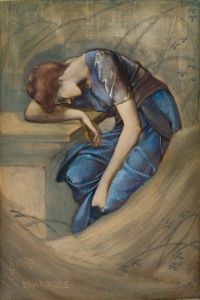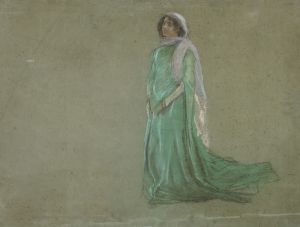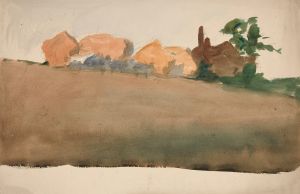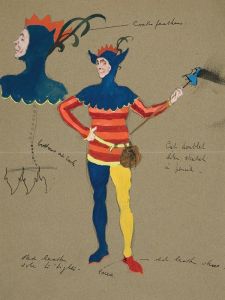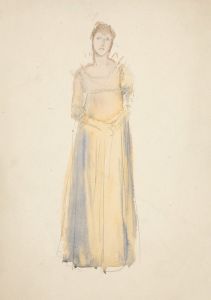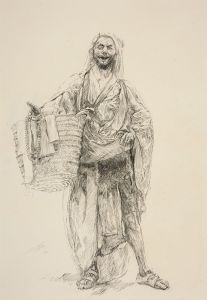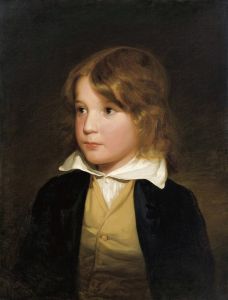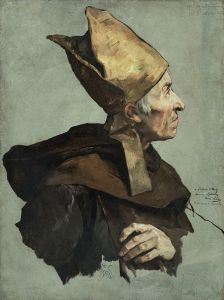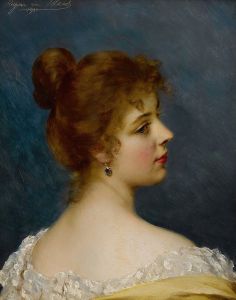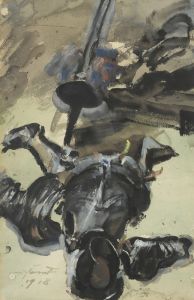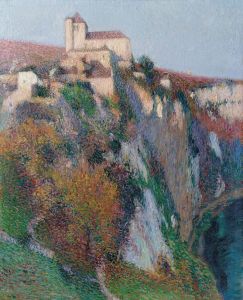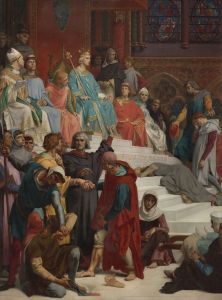
Figure with mandolin in mediaeval costume
A hand-painted replica of Edwin Austin Abbey’s masterpiece Figure with mandolin in mediaeval costume, meticulously crafted by professional artists to capture the true essence of the original. Each piece is created with museum-quality canvas and rare mineral pigments, carefully painted by experienced artists with delicate brushstrokes and rich, layered colors to perfectly recreate the texture of the original artwork. Unlike machine-printed reproductions, this hand-painted version brings the painting to life, infused with the artist’s emotions and skill in every stroke. Whether for personal collection or home decoration, it instantly elevates the artistic atmosphere of any space.
"Figure with Mandolin in Mediaeval Costume" is a painting by the American artist Edwin Austin Abbey, who is renowned for his depictions of Shakespearean and Victorian subjects. Abbey was born on April 1, 1852, in Philadelphia, Pennsylvania, and he became a prominent illustrator and painter, particularly known for his historical and literary themes.
The painting "Figure with Mandolin in Mediaeval Costume" showcases Abbey's skill in capturing the essence of historical periods with meticulous attention to detail. The artwork features a figure dressed in medieval attire, playing a mandolin, which is a stringed musical instrument that was popular during the medieval and Renaissance periods. The costume and the instrument suggest a setting that is rich in historical context, reflecting Abbey's interest in and dedication to accurately portraying the past.
Abbey's career began as an illustrator for magazines such as Harper's Weekly, where he gained recognition for his illustrations of scenes from the works of William Shakespeare and other literary figures. His ability to bring literary and historical scenes to life through his art earned him a significant reputation. In 1878, Abbey moved to England, where he continued to develop his craft and became deeply involved in the British art scene.
One of Abbey's notable achievements was his election as a member of the Royal Academy of Arts in London, which was a testament to his skill and the high regard in which he was held by his peers. His works often featured elaborate costumes and settings, demonstrating his dedication to historical accuracy and his ability to create immersive, detailed scenes.
"Figure with Mandolin in Mediaeval Costume" is an example of Abbey's talent for combining historical accuracy with artistic creativity. The painting likely reflects his extensive research into the clothing, instruments, and cultural practices of the medieval period. Abbey's works are characterized by their rich color palettes, intricate details, and the ability to convey a narrative through visual means.
Edwin Austin Abbey's contributions to art extended beyond his paintings and illustrations. He also worked on large-scale murals, including those for the Boston Public Library and the Pennsylvania State Capitol. His legacy is marked by his ability to blend historical scholarship with artistic expression, creating works that continue to be appreciated for their beauty and historical significance.
In summary, "Figure with Mandolin in Mediaeval Costume" by Edwin Austin Abbey is a testament to the artist's dedication to historical accuracy and his skill in creating detailed, narrative-driven art. Abbey's work remains influential, and his paintings are celebrated for their ability to transport viewers to different times and places through their meticulous detail and vibrant storytelling.





